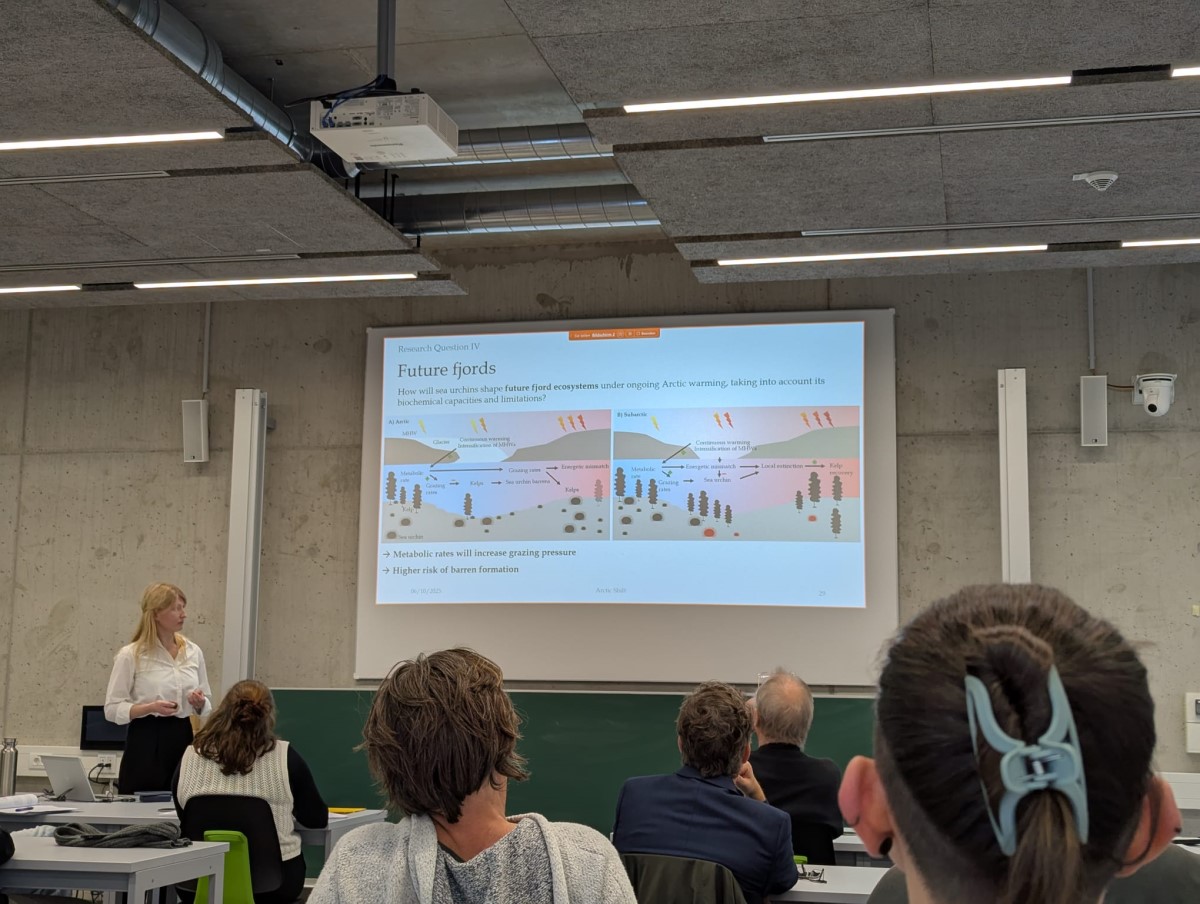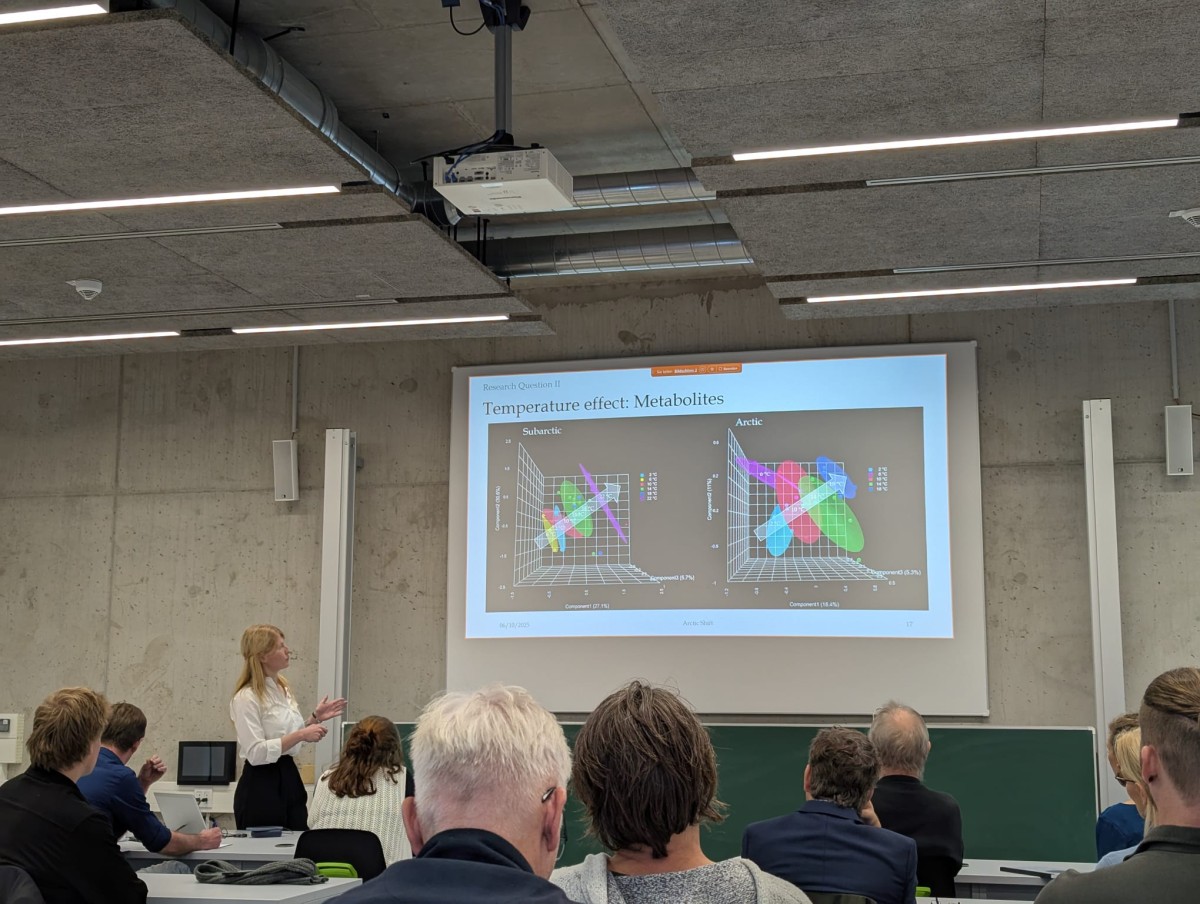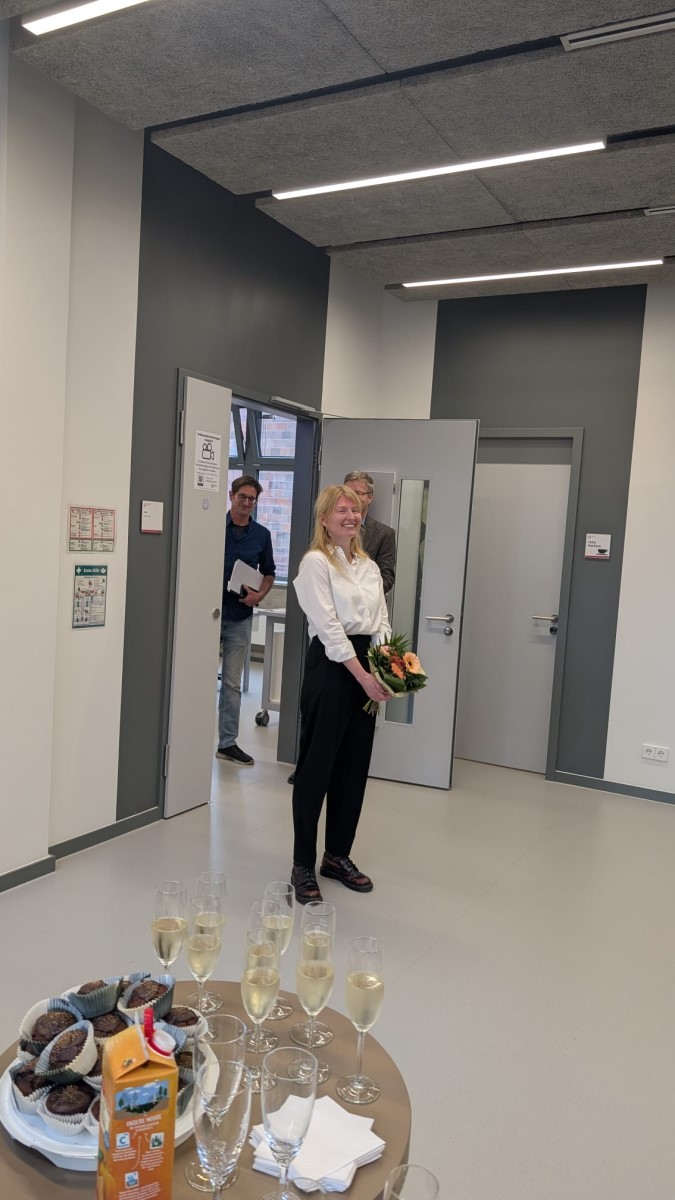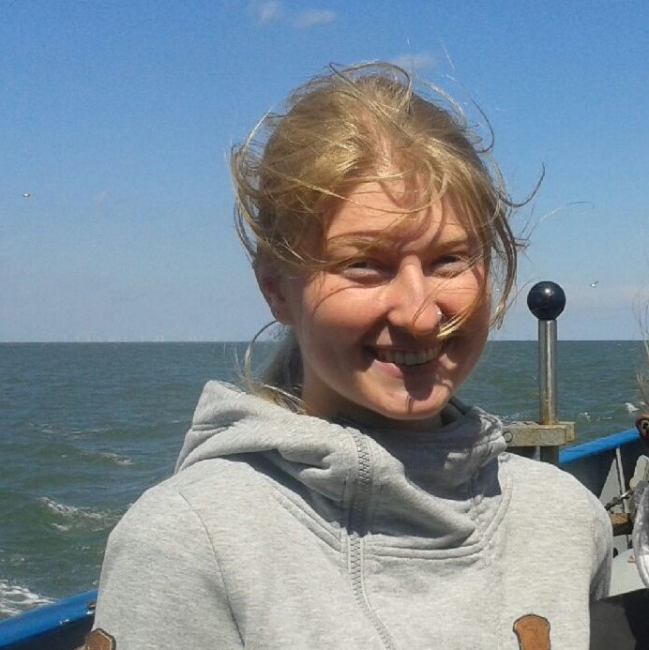Marie Koch: Sixth PhD thesis defended within FACE-IT
[Published 06 October 2025]
On 06 October 2025, Marie Koch successfully defended her PhD thesis, entitled “Trophodynamic shifts in the Arctic – biochemical capacities and limits of Benthic marine invertebrates“.
Marie worked within the FACE-IT project at the Alfred-Wegener-Institute, Helmholtz Centre for Polar and Marine Research and enrolled as a PhD students at the University of Bremen. Read the thesis summary below.
Congratulations, Marie!
Marie was supervised by Reinhard Saborowski (Alfred-Wegener-Institute, Helmholtz Centre for Polar and Marine Research). Reinhard Saborowski and Meike Stumpp (Christian-Albrechts-University Kiel, Kiel, Germany) reviewed the thesis.
The committee members of the defense were:
- Commission chair & Examiner 1: Kai Bischof (University of Bremen, Bremen, Germany)
- Examiner 2: Reinhard Saborowski (Alfred-Wegener-Institute, Helmholtz Centre for Polar and Marine Research, Bremerhaven, Germany)
- Examiner 3: Meike Stumpp (Christian-Albrechts-University Kiel, Kiel, Germany)
- Examiner 4: Tilmann Harder (University of Bremen, Bremen, Germany)
- Student member: Chiara Sickert (University of Bremen, Bremen, Germany)
- Student member: Tómas Garcia (Alfred-Wegener-Institute, Helmholtz Centre for Polar and Marine Research, Bremerhaven, Germany and University of Bremen, Bremen, Germany)
Abstract
The Arctic is stronger affected by climate change than other regions on Earth. In the Arctic, temperature increased 4-fold compared to the global average. This process, known as Arctic Amplification, is driven by a regional feedback loop between ocean heat uptake and reduced surface albedo. In the European Arctic, warm water inflow from the Atlantic contributes to the overall temperature increase. In addition to continuous warming, the Arctic is also exposed to marine heatwaves (MHWs) with increasing intensities and extreme summer temperatures. Temperature has a particularly strong influence on ectothermic marine invertebrates. All biological processes, from metabolic reactions to ecological performance, are temperature-dependent and shaped by the thermal regime. Consequently, warming is a major driver that affects ecosystem function and ecosystem change, particularly in Arctic fjords with high species richness and socio-ecological importance.
The green sea urchin, Strongylocentrotus droebachiensis, is the dominant grazer on macroalgae in Subarctic and Arctic fjords. Their impact on the benthic community became apparent during extensive overgrazing events in the 1970s along the Norwegian and Canadian coast. This species was responsible for the complete removal of dense kelp forests and the long-lasting formation of so-called ‘sea urchin barrens’. Therefore, the objective of my thesis was to investigate the temperature-dependent biochemical capacities and limits of this key species at biochemical, genetic, and behavioural levels. Assumptions on the future impact of S. droebachiensis on its environment in the context of continuous global warming are made.
Biochemical studies of the enzyme profile revealed a functional compartmentalisation of the digestive tract of S. droebachiensis. The stomach is the main side of lipid metabolism, while protein degradation and therefore nitrogen uptake is located in the intestine. Carbohydrate digestion was low but consistent along the entire digestive tract. This metabolic specialization supports the efficient absorption of lipids and proteins, which are less abundant in their kelp-dominated diet, whereas carbohydrates are readily available.
The temperature-dependent grazing behaviour was assessed in laboratory experiments with Subarctic and Arctic S. droebachiensis. Grazing rates were highest at the respective local summer temperature of each population. Additionally, a shift of the upper thermal limit suggested adaptation to regional thermal regimes. Metabolic rates, as deduced from respiration rates, increase exponentially with temperature. At elevated temperatures, sea urchins are at risk of a mismatch between energy uptake and consumption. This risk is higher for Subarctic sea urchins, because the thermal safety margin (TSM, difference between the highest experienced temperatures and the thermal limit) narrows more during MHW events than for the Arctic population.
Analyses of the metabolic profile of the digestive tract were conducted using 1H-NMR spectroscopy. The Subarctic sea urchins showed elevated concentrations of anaerobic metabolites near the lethal temperature, indicating a disturbance in energy balance. Digestive enzymes from Arctic sea urchins showed higher activities than those of Subarctic specimens. This was accompanied by lower activation energies (Ea), suggesting a higher metabolic efficiency in Arctic sea urchins, which are adapted to lower environmental temperatures. However, with rising temperatures, metabolic rates would increase more drastically in Arctic S. droebachiensis. Molecular sequence and structure analyses indicated that these variations in biochemical efficiencies are related to the structure of the respective enzyme. It can be concluded, that sea urchins show genetic adaptations towards their local thermal regime.
My thesis shows, that the effects of temperature on the physiology of S. droebachiensis will, in turn, have major influence on the structure and function of future Subarctic and Arctic fjords. The actual changes and their future extend will be determined by the interplay of a multitude of factors, like metabolic plasticity of sea urchins, their capacity for rapid adaptation to warming, as well as the effect of environmental change on kelps. A general northwards shift of sea urchin-dominated fjord habitats is expected, as grazing pressure will increase due to increasing temperatures. This is especially relevant for Arctic fjords, where sea urchins will continue to exist with a relatively large TSM, but experience higher metabolic rates with warming. This results in a higher probability for the formation of sea urchin barrens. In the Subarctic and more southern habitats, however, sea urchins are at high risk of experiencing energy imbalance, leading to a decline in abundance or even extinction, when their TSM is drastically reduced during extreme and prolonged MHWs.
Photos: Hannah Marie Drewes & Meike Koch



People involved
Marie KOCH
Role in FACE-IT:
• PhD student "Biodiversity Changes"
Alfred Wegener Institute, Helmholtz Centre for Polar and Marine Research, Bremerhaven, Germany
University of Bremen, Germany
Marie’s FACE-IT Projects
Kai BISCHOF
Role in FACE-IT:
• Scientific Coordinator
• Member of the Executive Board
• Co-Leader "Policy Dialogue and Outreach"
• Co-Leader "Project Management"
• Leader "Ethical Requirements"
• Researcher "Biodiversity Changes"
• Researcher "Ecosystem Function Changes"
Marine Botany, University of Bremen, Germany
Center for Marine Environmental Sciences MARUM, University of Bremen, Germany
UBremen personal page
Kai’s FACE-IT Projects
CHIARA SICKERT
Role in FACE-IT:
• BSc student "Ecosystem Function Changes"
Marine Botany, University of Bremen, Germany
Chiara’s FACE-IT Projects



